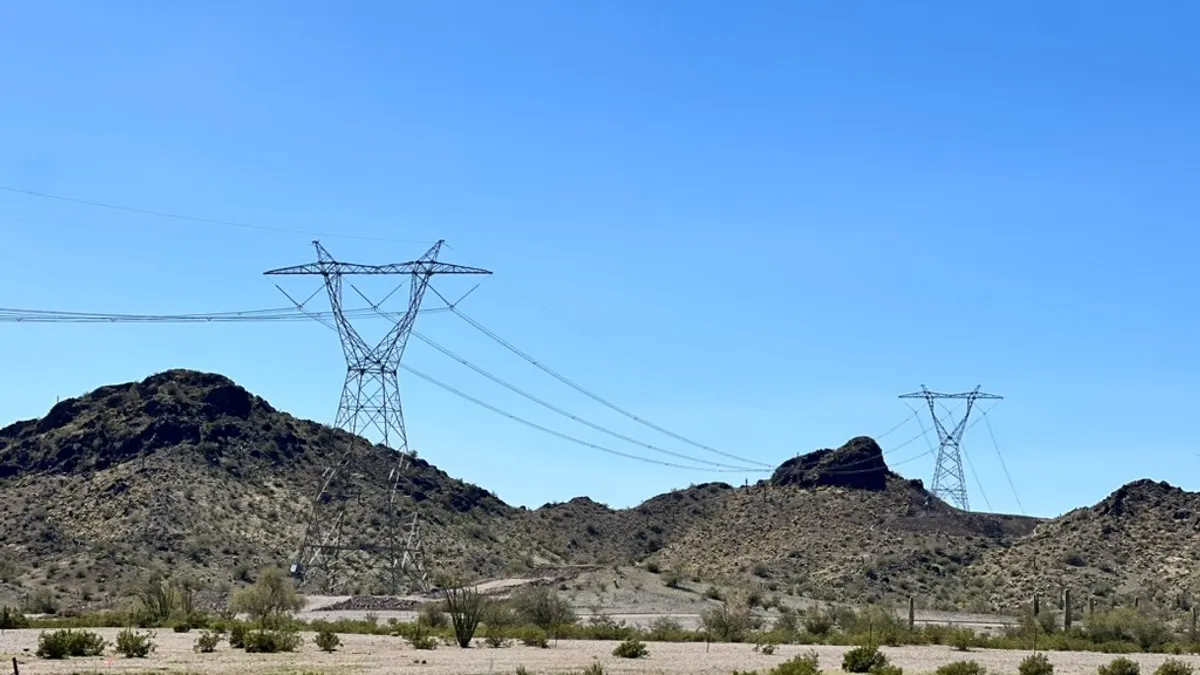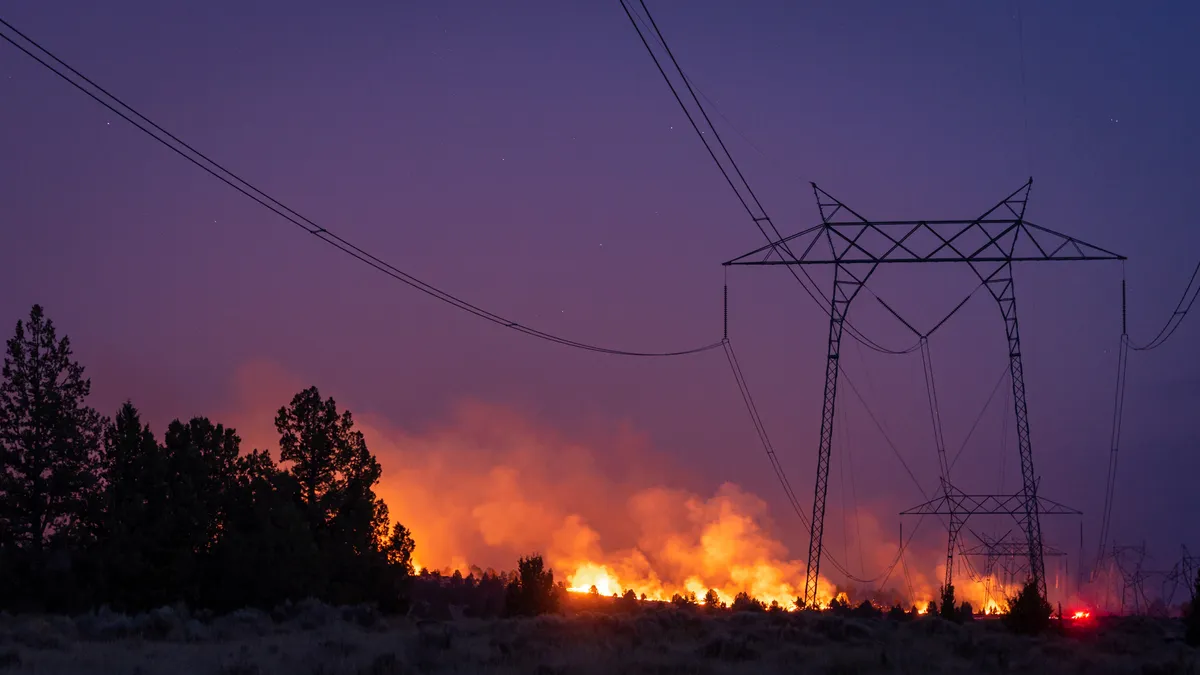With a new name and capital to invest, Warren Buffett’s Berkshire Hathaway Energy is on the hunt for major acquisitions.
The company formerly known as MidAmerican Energy Holdings has been on a shopping spree. In 2006, the utility holding company took full ownership of Northwest utility PacifiCorp in a $5.1 billion cash deal. In 2013, the company bought Nevada utility NV Energy for $5.6 billion. And most recently, Berkshire agreed to buy Canadian transmission company Altalink for a reported $3.2 billion.
Is Warren Buffett done yet? Not likely. In a letter to shareholders in March, Buffett wrote that "NV Energy will not be MidAmerican's last major acquisition." And while Buffett just bought AltaLink in May, there is no reason to believe the acquisitions will stop here.
The Oracle is always on the lookout for acquisition targets and wants to invest further in energy. "Our confidence is justified both by our past experience and by the knowledge that society will forever need massive investments in [...] energy," Buffett said.
So who's next on the Oracle's utility shopping list? This week, Utility Dive takes a look at Buffett's strict takeover criteria — and the utilities that meet it.
What is Buffett looking for?
Warren Buffett asks a lot from any potential utility acquisition. The company must be valued between $5 and $30 billion, have at least $75 million pre-tax income, consistent revenue streams, and offer a 10% or higher return on equity (ROE). Buffett wants companies that are pursuing an aggressive program of capital investment, which Berkshire Hathaway Energy actively encourages.
“Utilities offer a durable competitive advantage — energy is not likely to be disrupted by the Internet,” Robert Miles, an authority on Buffett and Berkshire Hathaway, told Utility Dive. “Utilities are capital intensive and Berkshire has plenty of it, with $2 billion in monthly cash flow for Buffett and his subsidiary managers to reallocate.”
For utilities, “Berkshire Hathaway Energy is a logical buyer with lots of capital,” Miles said. Unlike most utility companies, Berkshire Hathaway Energy does not pay 50% or more of its earnings in dividends to shareholders in order to procure capital; instead, Miles said, it can borrow money from Berkshire’s insurance subsidiaries “at a lower rate than the U.S. government.”
The most difficult challenge for utilities attracting Berkshire’s interest will be meeting Buffett’s 10% ROE benchmark, according to Miles.
Very few companies fit this profile — but there are a few.
Buffett's utility takeover targets
Prior to the AltaLink acquisition, Bloomberg analysts pegged 19 utilities and gas pipeline companies that meet Buffett's notoriously strict criteria for acquisition, including Exelon, Dominion Resources, NextEra Energy, Public Service Enterprise Group, CenterPoint Energy and Pinnacle West Capital.
Three utilities, in particular, stood out as being well-positioned for takeover: Alliant Energy, Wisconsin Energy and Westar Energy.
Wisconsin Energy
Recently valued at $9.8 billion, with $915 million in earnings before tax and a 13% return on equity in 2013, Wisconsin Energy is a good candidate for Buffett. In a Bloomberg article earlier this year, Gabelli and Company’s Timothy Winter pitched the utility to Buffett. Winter pointed out that the utility has a well-respected management team, something that Buffett would like as most of his acquisitions retain their current management, and operates in two states, Wisconsin and Michigan, which both have the reputation of a favorable regulatory environment.
Alliant Energy
Alliant Energy is also a worthy candidate for Buffett, according to Mark Barnett at Morningstar. The utility’s solid management, thirst for capital investment, and large growth potential make the utility appealing to take over. Alliant Energy is valued at $5.9 billion and offers a 10.4% return on equity, just above Buffett’s baseline. The utility serves 1.4 million customers in Iowa, Minnesota, and Wisconsin. Buffett has been known to favor investing in companies that offer further economic returns in states he already has a foothold in (Berkshire Hathaway Energy is headquartered in Iowa). “Buffett prefers bolt-on acquisitions, or adding to the businesses and industries he already knows," Miles said.
Westar Energy
Kansas utility Westar Energy Inc is another worthy candidate, according to Barnett. Although the utility’s valuation is below the $5 billion benchmark at $4.4 billion, it has plans to spend $3.4 billion over the course of 2014-18, according to company filings, which is one of the biggest capital investment programs currently being pursued by a U.S. utility relative to its size.
Oncor
At the end of April 2014, Oncor’s parent company Energy Future Holdings (EFH) filed for Chapter 11 bankruptcy. Notably, Oncor did not file.
Analysts predict that EFH’s creditors will try to sell Oncor to help ease bankruptcy proceedings against EFH. As the biggest electricity transmission and distribution service provider in Texas, Oncor commands about $15 billion in predictable earnings, according to Bloomberg analysts. EFH’s 80% stake in Oncor is valued at about $7 billion, excluding $6.3 billion in debt.
Let’s take a look at 2013’s performance: Net income was up by almost 25% at $432 billion. $310 million was paid over to EFH and Oncor’s other owners – capital that Berkshire Hathaway Energy could re-appropriate and invest back into the company, providing major opportunity for growth. Currently, Texas regulators allow a 10% return on equity and are likely to approve the $1 billion per year capital spending program Oncor has proposed for new infrastructure to help meet Texas’ rising electricity demand.
As things stand, Oncor isn’t on the market. EFH’s creditors control the majority stake, but Gabelli’s Winter thinks they won’t hold onto it for any longer than necessary. Texas regulators have a cap on the amount of dividends Oncor can pay back to owners, which makes it a less convenient investment as creditors try to steer EFH through its bankruptcy. Better to sell it, Winter recommended.
And who better to sell it to than an investor looking to recoup their losses from EFH? Berkshire Hathaway invested $2 billion in EFH, which eventually lost the company $873 million. Oncor is not only a business Buffett knows, but meets his criteria for acquisition.
Moody’s analysts have deemed Oncor a “premium asset," which means it is also being eyed by other utilities, including Exelon, fresh off its move to acquire Pepco Holdings. Berkshire Hathaway Energy doesn’t engage in bidding wars, preferring possible acquisitions to approach them. Another stumbling block is that disentangling Oncor from its parent company could take years if there is no mutual separation agreement, said Morningstar analyst Joseph DeSapri.
Buffett M&A: Gazing into the crystal ball
The best bet for predicting Buffett’s next utility move, Miles said, is to look at the previous acquisitions.
“Future acquisitions will look a lot like NV Energy, Pacific Corp, Northern National Gas, and other Berkshire Hathaway Energy properties," Miles said. "Purchased at a reasonable price with good returns and quality management.”
The acquisition of NV Energy, he said, will be the model for any new utility M&A activity by Berkshire Hathaway Energy in the near future. Miles pointed to the company’s strong earnings, its 11.5% pretax return on the $5.6 billion purchase price (after debt refinancing by Berkshire Hathaway Energy), a traditionally regulated monopoly in its service territory and good management as key motivators for the deal.
Asked whether he had any idea who Buffett might go after next, Miles replied, "If I did, I would invest in the companies.”





















